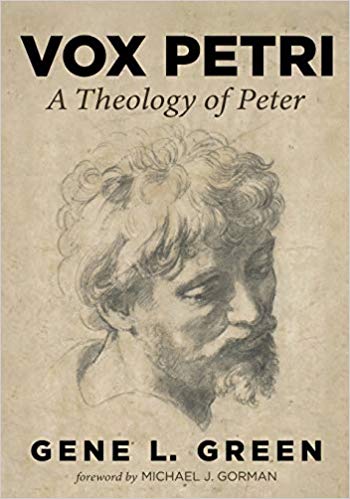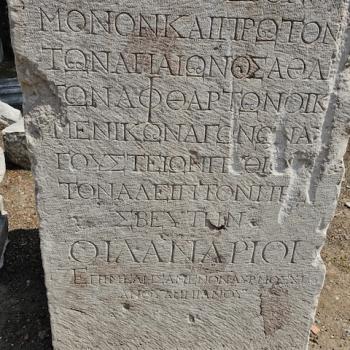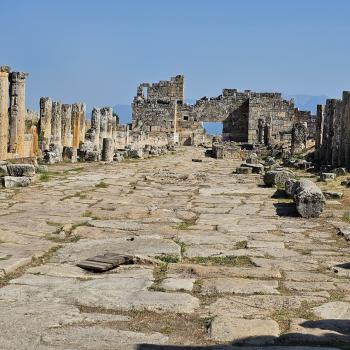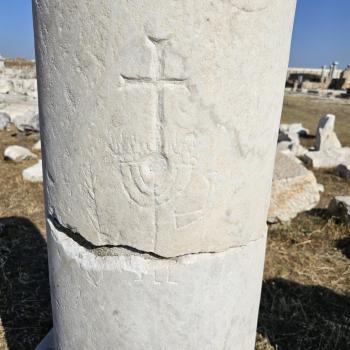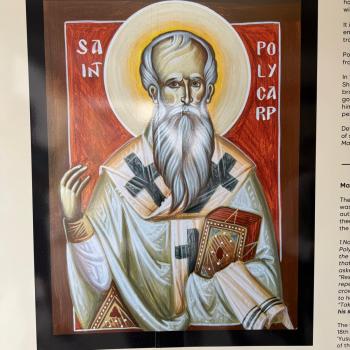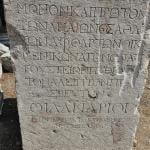In his helpful discussion of the Son of Man material in Mark, Green is quite right to stress the background being found in Dan. 7, and that Jesus is making some remarkable claims about himself as a transcendent figure who’s reign will be everlasting, and who will judge the earth, including judging those who end up judging him in the Jewish trial before Caiaphas (see Mark 14). “The Son of Man sayings hold together the central realities of Mark’s Christology.” (p. 179).
In an interesting suggestion, Green thinks that the feeding of the 5,000 by Jesus (which does indeed portray him as the compassionate shepherd feeding sheep who lacked such a shepherd) foreshadows the last supper with the disciples. (p. 183). I must say I fail to see the connection. One is a meal for non-disciples involving bread and fish, the other a sacred meal with disciples involving bread and wine and the promise of a new covenant. The former is just an act of compassion as the text suggests, the latter is much more. Does the feeding miracle echo the manna from heaven story in Exodus? If so the echo is faint, because Jesus is not really portrayed as a new Moses in Mark. A better case can be made for that in Matthew.
More insightful is the suggestion that we compare the rending of heaven and the dove coming down on Jesus in Mk. 1 with the rending of the temple veil, which symbolized the heavens (p. 187). But what are we to deduce from the use of the same word for ‘rend’ in each case? Green takes the latter to mean that God’s presence is made available to all by the death of Jesus. But the immediate context, including Mk. 13 suggests rather that God has abandoned the building, and this is part of the coming judgment on the Temple. So at the beginning the divine presence comes and dwells on Jesus, and at the end, when Jesus dies, the divine presence leaves the Temple, due to the rejection and death of Jesus. This best comports with the parable of the vineyard which also signals coming judgment on the Jewish authorities who run the temple.
Green’s treatment of the ‘messianic secret motif is said to be ‘about crowd management in the face of Jesus immense popularity.” (p. 192). That may be part of the issue, but it would be better to say this motif is part of the apocalyptic ethos of the document— Jesus will reveal his identity in his own way and at his own timing, and in any case he doesn’t want a credit rating from demons who know who he is. The silencing motif must be compared to the revelatory disclosure motifs to the disciples, for instance in Mk. 9.
I’m am less convinced than Green is that some of Mark’s presentation is meant to counter the rise of the imperial cult, by offering Jesus as the reality of which Caesar is the parody (a line from Tom Wright). And I am puzzled by his reading of the word of the centurion at the cross when Jesus dies. This is not the Roman empire representative recognizing the real Son of God, as opposed to the Emperor. A careful look at the Lukan parallel makes rather clear that the exclamation more likely indicates that the soldier saw Jesus as an innocent and righteous man, who died with divine dignity, unlike most crucifixion victims, and thus ‘a son of the gods’. Yes this may foreshadow Gentiles later confessing Jesus as Son of God, but it must be remembered that a pagan thought there were numerous sons of the gods, not just the emperor. The historical reality of that moment is not about a centurion suggesting here is the real Son of God (and Tiberius is not).
Is Christ portrayed as the Passover lamb in Mark? Mk. 10.45 indicates he is portrayed as the vicarious sacrifice providing a ransom for the many, with a possible allusion to Isaiah 52-53, but it must be remembered that the Passover is not about atonement for sins. Rather it is about an apotropaic sacrifice with the blood of the lamb averting judgment on God’s people, which instead falls on Pharaoh’s people. The last supper story in Mark does not highlight Jesus as the Passover lamb, indeed there is no mention of a lamb of any kind in that story. I also do not think Mark. 16.8 is the original ending of that Gospel, but take seriously the suggestion of Papias that the original form of the work was unfinished (or perhaps more likely the original ending was lost, since it would be at the end of the scroll, on it’s outermost edge. See the study by Clayton Croy on this). Green is right however that in any case we have the angelic announcement that Jesus is risen.
In regard to Mark’s portrayal of the disciples, I found quite helpful Green’s quoting of Whitney Shiner (on p. 211):
After examining various philosopher/student relationships and comparing it to what we find between Jesus and his disciples Shiner concludes: “Unlike the followers of philosophers and wisdom teachers, the disciples of Jesus are shown to have no apparent merit. While other teachers draw their students from the intellectual and moral elite, Jesus gathers an undistinguished group… on the margins of Jesus’ society.” Just so. And Green is insightful in stressing that while disciples must take up their crosses and follow the example of Jesus, even unto martyrdom, still “Jesus moves from being the imitable model of service to doing that which is inimitable ‘And to give his life as a ransom for many'” (p. 229). The disciples may be martyred but their deaths do not atone for sins. Jesus is their moral example, but as Green says, he is much more than that.


